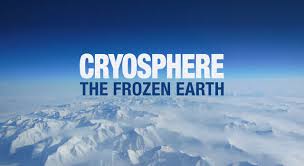Mission
The mission of the NASA Goddard Space Flight Center’s Cryospheric Sciences Laboratory is to advance our understanding of Earth’s cryosphere and its relationship to other elements of the global climate system.
About
Cryospheric Sciences is a part of Hydrospheric, Biospheric, and Geophysics Sciences located at NASA’s Goddard Space Flight Center in Greenbelt, Maryland. We are an international group, from students to senior scientists, with diverse backgrounds in geophysics, computer science, geology, physics, math, geography, and engineering. Our scientists use in-situ and remote observations and modeling techniques to study the cryosphere and interactions with other parts of the Earth system.
The cryosphere encompasses components of the Earth that contain water in its frozen state: ice sheets, ice caps, glaciers, sea ice, snow, lake ice, and permafrost. While these components exist at many locations on Earth, they are most abundant in the polar regions. We collaborate with other GSFC groups such as Global Modeling and Assimilation Office, Geodesy and Geophysics, and Hydrology Labs to understand the role of the cryosphere in the global climate. Observations and models of global climate indicate that the cryosphere is highly sensitive to climate change. Consequently, advancing our understanding of the past, present, and future of the cryosphere is essential to our advancing understanding of the Earth as a whole.
The Broad Goals of the Cryospheric Sciences
- Measuring and understanding the mass balance of land ice, and its implications for sea-level rise,
- Monitoring and understanding important cryospheric processes, such as changes in sea ice and snow cover and their relationships with other parts of the climate system,
- Improving the representation of cryospheric processes in climate models.


| 615 – Cryospheric Sciences Laboratory ▶ |
